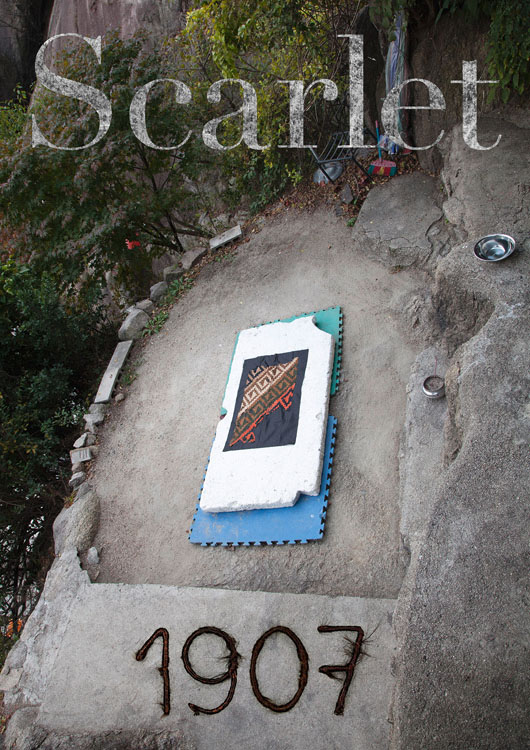
Textile Fragment 10
섬유 예술은 대략 기원전 10,000년부터 이 지역에서 존속되어 왔다. 직조기 직물은 페루 북부의 전 세라믹 시기(기원전 3000-1800년)에 처음 등장한다. 초기 지평선 시대 Horizon Period(기원전 1800-0년)까지 거의 모든 기법을 사용한 직조기로 짠 직물이 볼리비아, 칠레, 페루의 남쪽 고지대와 해안 지역에서 발견된다. 초기 중간기(0-500 CE) 안데스 직물 전통은 불연속적인 씨실과 날실 기법을 추가하고 자수에 초점을 맞춰 완전하게 발전했다. 중기 지평선 시대(500-800 CE) 동안 직물은 알려진 거의 모든 직물 구조에서 사용되었다.
Despite its biblical link to the Whore of Babylon, it replaced purple as the colour for the cassocks of Roman Catholic cardinals in the 13th century. Later this then provided extremist Protestants with the material to talk of the ‘scarlet whore of Rome’ and it continued popular life as the colour of ‘loose’ women.
주홍색은 성서에서 바빌론의 창녀와 연관되어 있음에도 불구하고, 13세기 로마 가톨릭 추기경들의 캐속[1]cassocks의색이었던 보라색을 대체했다. 후에 이 연관성은 극단주의 개신교인에게 ‘로마의 주홍색 창녀’에 대해 이야기할 수 있는 자료를 제공했고, 이는 ‘문란한’ 여성들의 색으로 대중적으로 계속 사용되었다.
[1] 16~17세기경 유럽의 보병이나 기병이 착용한 무릎길이의 승마용 외투. 17세기 후반에는 일반 남성도 입었다.
A strike which began with the destruction of the hated company store and against ‘identification’ passbooks containing the disciplinary history of each textile worker in Pueblo, Mexico was met with bloody repression, but was the start of a wave of empowering strikes continuing through the Mexican Revolution.
파업은 멕시코 푸에블로에서 각 섬유 노동자들의 징계 이력이 담긴 ‘식별’ 장부에 반대하며 증오하는 회사의 상점을 파괴하며 시작되었다. 이들은 피비린내 나는 탄압에 부딪쳤지만, 멕시코 혁명을 통해 계속되는 세력화 파업의 시작이었다.
Things then got really out of hand as her sister called for a shamanic conference in Germany. Their verdict was serious. I must send all the textiles back to the Andes or burn them on the bank of a river. I must do this, was the agreed opinion, because my life was under threat from spirits in the textiles. They did not want to be in Austria and were directing their aggression towards me.
그 후 그녀의 여동생이 독일에서 무속 회의를 소집하면서 상황은 정말 감당할 수 없게 되었다. 그들의 평결은 심각했다. 나는 모든 직물을 안데스 산맥으로 돌려보내거나 강둑에서 태워버려야 했다. 직물에 대한 신념때문에 내 삶이 위협을 받고 있었기 때문에, 나는 직물을 없애야만 했다. 그들은 [그 직물이] 오스트리아에 있는 것을 원하지 않았고, 그들의 공격성은 나에게 향하고 있었다.
